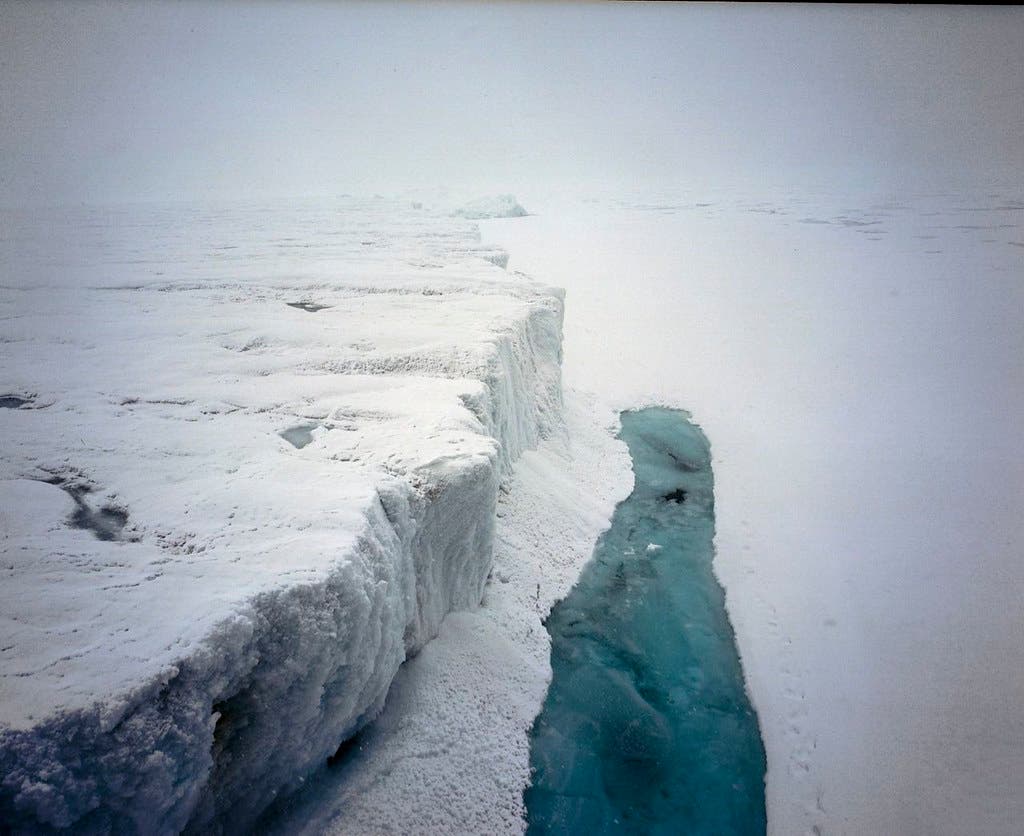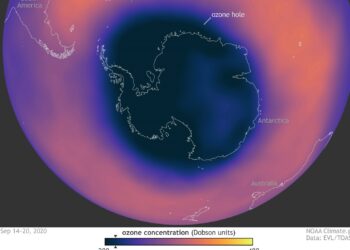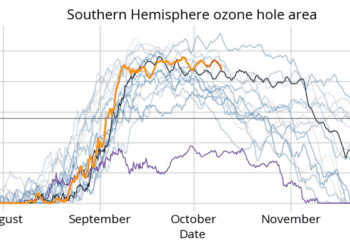The ozone hole shrinkage is regarded as an environmental success story for mankind. But we may have judged things too quickly: these substances have significantly contributed to global warming, particularly in the Arctic.
Here’s why that may be a good thing.

Good news
It all started in 1985 when a scientific paper reported a growing stratospheric ozone hole over Antarctica. The culprit, it soon became apparent, was coming from our household items: hairsprays, refrigerators, and air conditioners.
These items and many more were generating long-lived halogen substances that were depleting the ozone, producing a hole in the ozone layer. Remarkably, the world got together and passed legislation that banned most of these products.
It worked. After the legislation was passed, the ozone hole started shrinking more and more, recently reaching its smallest size since it was first discovered. It’s a positive story which shows that, if we get together and take swift action, we can do wonderful things and limit our environmental impact. But this isn’t the end of the story, a new study concludes.
… and bad news
Although their ozone-damaging properties were well established, these substances (eloquently called ozone-depleting substances, or ODS) have remained surprisingly understudied. Simply put, we’re not sure exactly what they do, aside from damaging the ozone layer.
Now, a new study published in Nature Climate Change reports that these substances caused about a third of all global warming from 1955 to 2005 — and about half of Arctic sea ice loss in that period. They acted as a strong supplement to carbon dioxide
“We showed that ODS have affected the Arctic climate in a substantial way,” said Lamont-Doherty researcher Michael Previdi, referring to the warming caused by these substances.
The scientists reached their conclusion using two very different climate models, both of which are widely used in the scientific community, and both of which were developed at the U.S. National Center for Atmospheric Research.
This means that the Montreal Protocol, the international treaty designed to protect the ozone layer by phasing out the production of ODS, is even more important than we thought — not only was it protecting the ozone layer, but it was also fighting climate change without us even realizing it.
Which leads us to why this may all be a good thing.
… and good news again
Because we’ve already banned these substances, their effect is starting to fade, and they’ve already started to dissipate in the decades since the ban. This means that, unwittingly, we’ve taken an important step to combat climate change.
“Our findings also have implications for the future because the phase-out of [ozone-depleting substances], which is well under way, will substantially mitigate Arctic warming and sea-ice melting in the coming decades,” the study explains.
It’s heartening to see that what appeared to be bad news actually turned out to be a positive story.
“Climate mitigation is in action as we speak because these substances are decreasing in the atmosphere, thanks to the Montreal Protocol,” said Lorenzo Polvani, lead author of the study and a professor in Columbia’s Department of Applied Physics and Applied Mathematics. “In the coming decades, they will contribute less and less to global warming. It’s a good-news story.”
However, we mustn’t be too hasty to pat ourselves on the back. Although these results look promising, they still need to be confirmed by additional study. In addition, despite bans and reductions, there is still a healthy amount of ODS being produced and expelled into the atmosphere. Their replacements can also spell bad news and have the potential to trap atmospheric heat.
To avoid ending on a bad note, this can be good news nonetheless. But it also shows just how much of an impact our decisions can have — both positive and negative.






